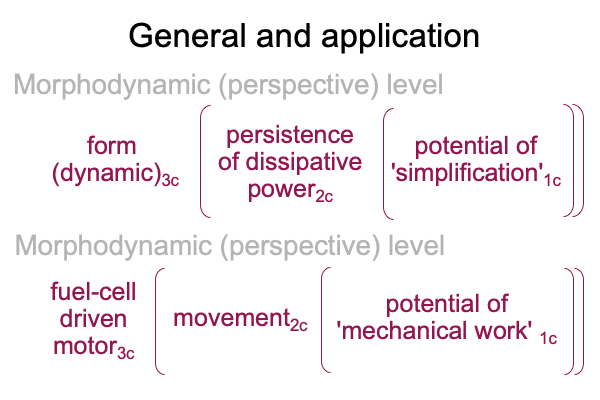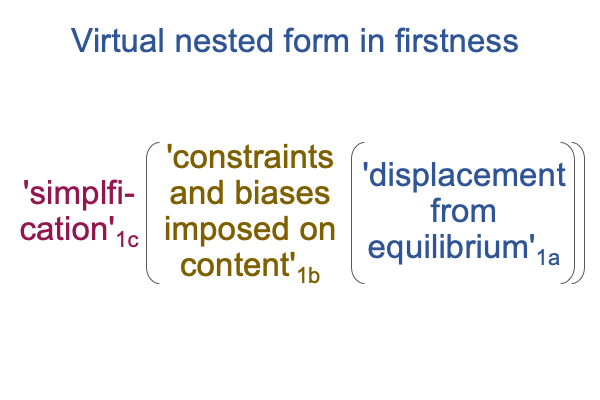0138 With that in mind, I turn to the morphodynamic level.
The morphodynamic level puts the homeodynamic level into perspective, just as the homeodynamic level situates the adjusted thermodynamic level.
0139 Here is a comparison of the general formulation and the ongoing application.

0140 For the example, the dynamic form3c is the fuel-cell driven motor3c.
The power2c of the emergent phenomenon2b is intentionally dissipated as movement2c.
So, the example’s potential1c is ‘mechanical work’.
So, why does Deacon, the Professor Scientist-Educator, choose the label, ‘simpification’1c?
0141 Perhaps, ‘simplification’1c better evokes final causality hidden in the shadow of the image of ‘mechanical work’1c as an efficient cause.
Certainly, it evokes the virtual formal cause that says, “If this fuel cell is going to work for this motor, it had better be both reliable and small.”
0142 What does that call for?
Simplification.

Each feature of the fuel cell adapts to this formal requirement1c, commanding from its perch as the perspective-level potential1c.
0143 Indeed, some emergent phenomena2b, self-less “selves” operating within a even more emergent “self”, are stunning in their simplicity and beauty. They are amazing in the way that they arise from constraints1b imposed on processes2a that would otherwise occur without them. It is as if a designer sees an opportunity1b to take a little of that “otherwise” energy2a and fashion it to produce something that might otherwise not occur2b.
Emergent phenomena2b are what we think of when we think about creation.
